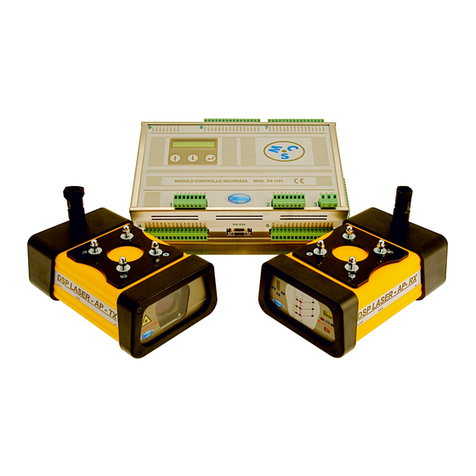DSP LASER
4 DSPLSR01EN
5. Contents
1. Foreword..................................................................................................................... 1
1.1. General Information ............................................................................................ 1
2. Symbols used in the manual ..................................................................................... 2
3. Warranty...................................................................................................................... 3
4. Technical Service....................................................................................................... 3
5. Contents...................................................................................................................... 4
6. Safety precautions ..................................................................................................... 6
6.1. Signals of residual risks ...................................................................................... 6
6.2. Precautions......................................................................................................... 6
6.3. Dangers of electrical kind.................................................................................... 6
6.4. Prohibitions......................................................................................................... 6
6.5. Checks................................................................................................................ 6
6.6. Spare parts......................................................................................................... 7
6.7. Decommissioning................................................................................................ 7
7. Key .............................................................................................................................. 8
8. Planning safety measures ......................................................................................... 9
9. Introduction ...............................................................................................................11
9.1. Operating cycle of a bending press-brake..........................................................13
9.2. Foreseen use of the DSP LASER device...........................................................14
9.3. Operating principle.............................................................................................15
10. Requirements necessary for the correct use of DSP LASER........................16
10.1. Command circuit of the press-brake...................................................................16
10.1.1. Start and stop......................................................................................................16
10.1.2. Inhibition..............................................................................................................16
10.1.3. Operating modes ................................................................................................17
10.1.4. Check of overtravel or stop space......................................................................25
10.1.5. Interlock of restart ...............................................................................................28
11. Residual risks...................................................................................................29
11.1. Risks due to the Laser .......................................................................................29
11.2. Risks due to mechanical dangers.......................................................................29
11.2.1. Manual sheet support .........................................................................................29
11.2.2. Blanking ..............................................................................................................30
11.2.3. Installation and uninstallation of tools.................................................................31
11.2.4. Work organization...............................................................................................31
12. Signals and plate data......................................................................................32
12.1. Light indicators: scheme and functions...............................................................32
12.1.1. Display of the phase of stop space check ..........................................................32
12.1.2. Display of the alignment with four LEDs.............................................................33
12.1.3. Alignment LED....................................................................................................33




























